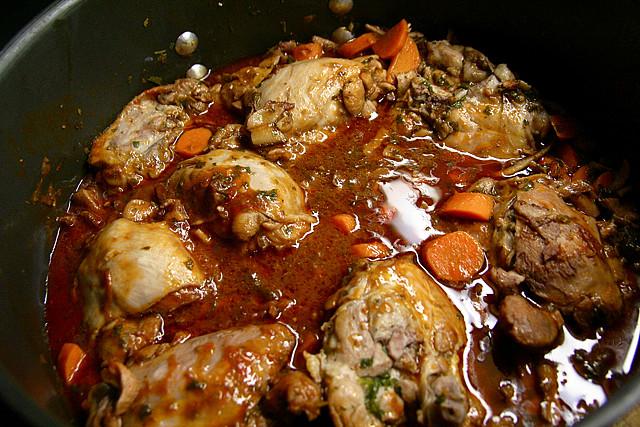- Read offline
- Access all content
- Use the in-app Map to find sites, and add custom locations (your hotel...)
- Build a list of your own favourites
- Search the contents with full-text search functionality
- ... and more!
coq au vin
chicken braised in wine sauce

The coq, or cockeral, symbol of courage and fury, is the national emblem of France, which is one of the few countries in the world that dines on its national symbol (although most cooks use chicken, which has the opposite reputation, when making coq au vin).
It’s traditionally stewed in Burgundy wine, lardons, mushrooms, onions, a bouquet garni, and garlic. There are other versions depending on the region, such as coq au Champagne or coq au Vin Jaune (Jura), coq au pourpre or coq au violet (Beaujolais Nouveau), and coq au riesling with a touch of cream (Alsace).
It has one of the best French culinary legends. In 52 BC, as the Roman legions and Gauls prepared for the Battle of Gergovia, the great chief Vercingetorix sent Julius Caesar a cockerel to show Caesar the Gauls were ready for combat.
The next day Caesar invited Vercingetorix to lunch, and served him a new dish—coq au vin, his proud cockerel stewed in wine, inferring that the Gaulish goose was cooked. But Gergovia was one of the few battles that Caesar lost. So there.
A rustic version of the dish seems to have existed under the radar of cookery book writers (naturally, any farmer would tell you, the last bird you slaughter in the hen house is the rooster), but it became fashionable again in the 20th century, both in France and abroad, thanks to Julia Child, who promoted it on her television show.
Image by stevendepolo

